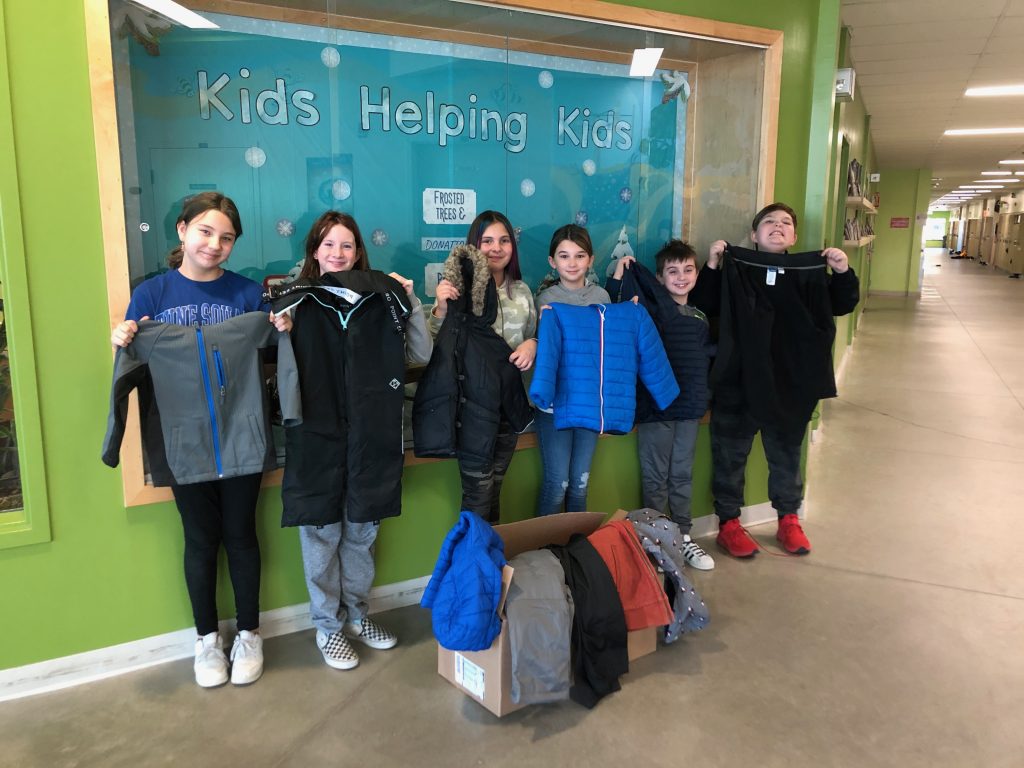What’s happening in Rainbow Schools?
Rainbow Schools challenged to decrease waste and divert textiles

This month, Rainbow District School Board invited staff and students to decrease waste and divert textiles using the five R’s – reduce, reuse, repurpose, repair and recycle.
“Recycling extends the life of resources by keeping them in circulation rather than in landfills,” says Director of Education Bruce Bourget. “When students learn to repurpose clothing, they develop lifelong habits that will serve them and the environment well into the future.”
According to the not-for-profit organization Canopy, some 200 million trees are cut each year to make textiles. Of the 6.5 million metric tonnes of rayon produced annually for clothing, about half comes from ancient and endangered forests.
Research also suggests that the average person buys three times more clothing than they did in the 1980s. With textile waste on the rise – largely due to increased sales of fast fashion items – more garments are ending up in landfill sites.
Textiles also affect our water systems – with some 80 per cent of ocean plastic pollution coming from clothing fabrics alone. Statistics show that a single load of synthetic laundry can release up to 12 million fibers into our water system.
“There are choices we can all make to help reduce our carbon footprint,” says Director Bourget. “This challenge helps students make the connection between the clothes they wear and the waste they produce.”
During December, schools were challenged to support a winter clothing drive, start or expand existing compost programs, and perform regular waste audits to encourage proper waste sorting.
Traditional Indigenous Medicine Wheel teachings – M’Shkiki E-waawyeh Kinomaadwinan – parallel a circular economy. By placing ourselves in the centre of the circle – as consumers, responsible members of our family, and active citizens in society – we foster the ability to make conscious choices with positive impacts on the environment.
Traditional Indigenous practices promote environmental stewardship, including harvest only what you need, use all parts of animals/plants during a harvest, avoid waste whenever possible, appreciate hand-me-downs, be creative in reusing items, and avoid disposable cutlery by carrying a feast bundle with naagnan – plates, dboosk-naagnan – bowls, minikweganan – cups, b’dakjii’ganan – forks, emkwaanan – spoons, and mookmaanan – knives.
Last month, students were challenged to reduce harmful plastic pollution.
What will next month’s challenge be?
-30-
Media Contact:
Nicole Charette, Senior Advisor
Corporate Communications and Strategic Planning
Rainbow District School Board, 705-674-3171 ext. 7217
Photo: Rainbow Schools are decreasing waste and diverting textiles using the five R’s – reduce, reuse, repurpose, repair and recycle. Walden Public School participated in a winter clothing drive in support of Inner City Home of Sudbury, including, from left, Summer Groulx, Callie Hryciw, Allie Demers, Amelia Hyatt, Odin McGregor and Kale Reed.

 Translate
Translate